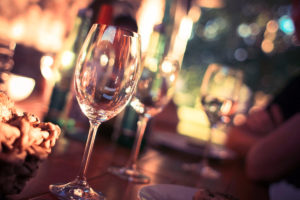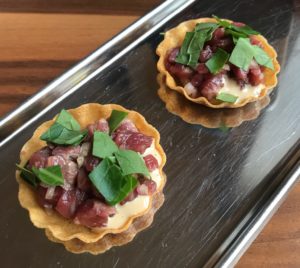 So last week, my wife convinced me to have dinner at The Clove Club, a 1-Michelin Star restaurant ranked #26 in the World’s 50 Best Restaurant Awards this year (Britain’s highest entry).
So last week, my wife convinced me to have dinner at The Clove Club, a 1-Michelin Star restaurant ranked #26 in the World’s 50 Best Restaurant Awards this year (Britain’s highest entry).
Now, you must understand that unlike my wife, I have a very un-Michelin-like palate.
I love Qiji nasi lemak, Soi 19 Thai wanton noodles, and the chicken and fish set from Long John Silver’s. I used to have the same dumb complaints as every clueless college kid: “Why should I pay 20X the price when I can get equally delicious food elsewhere? Why is 90% of the plate empty?”
Which is why I found myself bewildered at how I spent $200 on dinner at Clove Club… and loved it.
Cultured food bloggers will take 300 pictures of a restaurant, and describe each dish with mouthwatering detail. But because I’m a weirdo, I started analysing all of the Clove Club’s business decisions. What did they do right? How did they make a “food scrooge” like me feel GLAD to pay $200 for a meal?
It’s not just because they have good food and great service. Those are just table stakes. Here are some of the business decisions I learnt from them:
They Pre-Qualified Their Customers
Most restaurants are at the mercy of their customers. These days, you can call to reserve a table, never show up, and there’s nothing that the restaurant can do. Up to twenty percent of diners never show up for their tables, costing British restaurants up to 16 billion pounds annually.
The Clove Club, on the other hand, makes you PRE-PAY for your meal. This does 2 things:
- It secures revenue for the restaurant; and
- It makes customers REVERE their food
#2 is important. It de-commoditizes their dishes and sends a strong message: Hey, I KNOW you’re gonna love your meal. I only have limited tables at my restaurant, so if you wanna try it, you’d better be serious about it. (Of course, that only works when you’re selling stuff that people will love.)
Psychologically, it also makes customers happier. Psychologist Elisabeth Dunn and HBS Marketing professor Michael Norton found that pre-paying for stuff can actually help you enjoy the experience more. That’s the secret that cruise ships, Universal Studios and all-inclusive resorts have employed for years.
They Narrowed Down The Decisions
The most awkward part of any restaurant meal is when everyone is trying to decide what to order. There’s always that awkward silence, and being pressured to make a decision puts the responsibility of having a good meal on me.
At the Clove Club, there are only two options: A 5-course menu or a 9-course menu. (With an optional wine pairing for both)
There are loads of psychological reasons why this works well. Customers don’t like making decisions, so narrowing down the decision set is a HUGE relief for them.
You’ve probably heard of the classic jam study published by Sheena Iyengar and Mark Leppar, showing that supermarket shoppers were more likely to buy jam when they were presented with 6 options, as opposed to 24 options. Having more choice isn’t always better.
As the London Evening Standard reported in its review of the Clove Club:
It’s oddly relaxing, having no choice — it takes the responsibility away from you and gives it all to the chef, deciding for you not how each dish should be but the structure of the whole meal.
They Emphasised The Experience As Much As The Product
In most casual diners, the server comes up to your table and goes, “Ok, who’s having the roast chicken?” You ordered a roast chicken, so you get a roast chicken. End of story.
In a fancy, upmarket restaurant, describing the dish turns into an entire art form. I LOVE watching waiters lovingly describe their food, as though they were talking about an old flame or a dear friend.
“And THIS, my friend, is an EXQUISITE crispy brick dough filled with fresh East Coast lobster, picked daikon and sautéed cabbage. And it’s served with a RICH pure lobster reduction and located harvested micro greens”. (Source)
Pretentious? Probably. But even though I understood only about 20% of whatever the waiter said, the meal felt more like an EXPERIENCE rather than just something to make me feel full.
Before our waiter served us our spider crab bisque, he showed us a LIVE CRAB nestled in a basket. One of the courses was a Madeira wine, which he proudly proclaimed, “Everything in this bottle is 108 years old – they don’t MAKE this anymore, anywhere in the world!”
To be honest, I have no idea whether anything he said was true, but everything we saw made us go, “oooooohhhhh!”
To be perfectly honest, the food wasn’t the best-tasting that I’ve had (But hey, I love Long John Silver’s, so what do I know?). But I also understand that when it comes to premium experiences, it’s about so much more than just the food – it’s the entire experience.
They Underpromised and Overdelivered
Everyone says that you need to do this, but almost no one does.
The menus and websites of traditional restaurants will oversell you on everything. A couple of weeks ago, I visited a restaurant that claimed to have the “best steak frites in town served with our famous sauce. We’ll even bring you seconds (believe us, you’ll want it). But after an extremely underwhelming meal, I walked away feeling like I had wasted $50 on something I could’ve cooked at home.
Clove Club was different. Even though we had the 9-course menu, they surprised us with three different starters, or “snacks” as they called them. Look how beautiful they are (I promise you, this is the only time I’m posting food pictures on this blogpost. #nofilter #dontknowhowtotakegoodphotos)
And at the end of the meal, after finishing two (yes, two) desserts, they served an additional dessert together with the bill.
Sure, that was probably already baked into the price of the meal – but it was the delivery that counted. I wasn’t expecting it, so anything they delivered above that was an awesome surprise.
In Short…
Many of these lessons were counterintuitive:
- Make customers revere your product
- Give fewer choices, not more
- It’s not just about your core product – it’s about the experience
- Undersell yourself but overdeliver
These don’t just apply to restaurants. How you can apply these principles to your work and your business?
Also, let me know in the comments below: Have you had an AMAZING meal that caused you to remember it for months to come? What made it stand out? What surprised you?


Wow! that’s intriguing. I think I’d love to try the restaurant some time in the coming weekend. You do not usually find such awesome experiences afterall. Thanks a ton for the review and suggestions.